Burbank Studio
Dave Hilberman
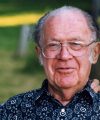
Notes
We interviewed Dave Hilberman three times at the home of one of his sons, Dan Hilberman, In Palo Alto, California, the first one was in 2003. We also interviewed his wife, Libby.
Dave Hilberman and Zack Schwartz rented some space on the top floor of the Otto K. Olesen building in Hollywood to use in the evenings to do personal painting. The partnership began with Steve Bosustow, when Bosustow began visiting their studio and bringing poster work to do for local industries.
The three formed a partnership in 1942, calling it United Film and Poster Service, even though they had no film work at the time. But, once films started coming in the name as changed to United Productions of America, and finally UPA Pictures. For the ending of Dave and Zack’s tenure at UPA, see the Zack Schwartz listing.
Dave Hilberman is part of two presently unreleased scenes.
Zack Schwartz
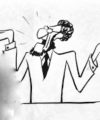
Notes
Zack Schwartz is an audio-only interview conducted by Giannalberto Bendazzi around the year 2000, in Israel, where he was teaching animation.
To read about the beginnings of UPA with his painting partner, Dave Hilberman, read Dave’s listing. For the departure of Dave and Zack in the mid 1940’s there are several versions of their split with Steve Bosustow. The most common version seems to be that the business side of the young studio wanted Bosustow out, but when they attempted to fire him, the artist’s backed Bosustow, so with their support behind him, he offered to buy out Dave and Zack. They accepted and with those funds formed their own studio in NYC, Tempo Productions.
Zack Schwartz is part of two presently unreleased scenes.
Steve Bosustow
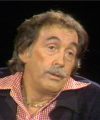
Notes
We interviewed Steve Bosustow several times, probably the most important one was an audio-only interview in three consecutive sessions at a friend’s home in Bel Aire, in 1977. As a result of Dave and Zack’s departure, Bosustow ran UPA from the mid 1940s, until Hank Saperstein took over in 1960.
Bill Scott said, during a tribute to Bobe, Hub, and Steve, at the Motion Picture Academy, “Steve’s strength was sales.” If that’s true, his single most important contribution was convincing Columbia Pictures to allow UPA to create a short of their own choosing, for every Mr. Magoo they made. And, those “Jolly Frolics” as they were initially called were the biggest legacy of UPA, and the primary subjects of our documentary feature.
Steve Bosustow is part of two presently unreleased scenes.
Millard Kaufman
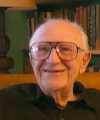
Notes
We interviewed Millard and Lorraine Kaufman at their home in Bel Aire, California, in 2011.
Millard Kaufman is credited with the creation of Mr. Magoo, in terms of the character’s personality traits, and he worked with John Hubley to create the physical characteristics. Although, Kaufman wrote the first Magoo and many other UPA films, he was primarily a live action feature film writer.
Millard Kaufman is part of one of the presently unreleased scenes.
Bill Hurtz
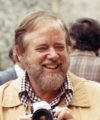
Notes
Bill Hurtz is an audio-only interview conducted in 1978 at the Bosustow Santa Monica studio for the Filmex Tribute screening in Century City, California.
Bill Hurtz is known mostly for directing UPAs Unicorn in the Garden, but he directed a number of other UPA films including Man Alive!, the only UPA film that was nominated for a documentary short. Hurtz was also Bob Cannon’s frequent Layout Artist, including Gerald McBoing Boing.
Bill Hurtz is part of one of the presently unreleased scenes.
Alan Zaslove
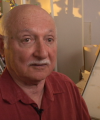
Notes
We interviewed Alan Zaslove in his Studio City home studio, in 2001, then a better one in 2003.
Camera: Patrick Dunavan
Alan Zaslove washed paint jars as a teenager in the early days of UPA, and worked his way up to director, by the early 60s. Plus, he was part of the panel discussion at the 2004. UPA Tribute at the AFI, as well as being an invaluable aid in finding UPA artists and materials. His last name put him at the end of our earlier alphabetical listings, even though he was among our very first interviews, and a continuously invaluable help.
Alan Zaslove is part of the Bottle Washer scene.
Jules Engel
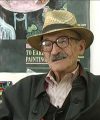
Notes
We interviewed Jules Engel in 2004 in his Cal Arts Office in Valencia, California, just a few months before his death.
Jules Engel was the chief background artist on all of Bobe Cannon’s films, as well as others at UPA. He made several of his own award winning films later in life, and was a teacher and head of the Experimental Animation department at Cal Arts, influencing many generations of young animation artists.
Jules Engel is part of the Gerald Hop scene.
(Click to hear a portion of his interview.)
Bob McIntoch
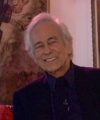
Notes
We interviewed Bob McIntosh in his Bel Aire home in 2004
Camera: Patrick Dunavan
Bob McIntosh was Pete Burness’ primary background artist on the Magoo series, although Bob did color on other UPA films as well. He spent most of his post-UPA days as a fine artist, whose paintings hang in many galleries, and he was a panelists at the UPA Tribute at the AFI in 2004. Btw, Patrick Dunavan also videotaped the UPA Tribute at the AFI.
Bob McIntosh is part of a presently unreleased scene.
Bill Melendez
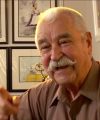
Notes
We interviewed Bill Melendez in his busy Studio City studio in 2004, sitting in front of a monitor that was showing some of the UPA films he had animated some 50 years earlier.
Camera: Patrick Dunavan
Bill Melendez was a top animator during the golden years of UPA. He later became better known as the director of the Charlie Brown specials, with Charles Schultz. Besides the two camera shoot with Bill in front of the monitor showing his films, we later filmed him at his drawing board, demonstrating his love of the art of animation, and how Gerald and Charlie Brown are similar designs. Bill was also on a panel, during the AMPAS “Great to be Nominated” series, as well as the panel at the Egyptian Theatre UPA Tribute in 2006.
Bill Melendez is part of the Cartoonz is Cartoonz scene.
Willis Pyle

Notes
We interviewed Willis Pyle i next to one of his paintings, in his home studio, in Seal Beach, California. in 2005
Camera: Patrick Dunavan / Audio: Andre Smith
Willie Pyle was an animator during the early days of the Columbia Pictures contract. We first met him at a Smoke House restaurant reunion of UPA alumni, in Toluca Lake, California, across from the John Lautner designed UPA Studio. Willie has spent most of this post-UPA years as an illustrator and painter in New York City. After our interview he treated our crew to lunch at a local sea food restaurant, driving us there in his antique Rolls Royce.
Willis Pyle is part of a presently unreleased scene.
Art Babbitt
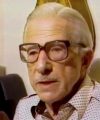
Notes
Art Babbitt is an audio-only interview conducted in 1978 at the Bosustow Santa Monica studio for the Filmex Tribute screening in Century City, California.
Although Babbitt is not often though of as part of the UPA artists, he was connected in part by his role in the 1941 Disney strike, which many of the UPA artists participated in. Plus, Babbitt animated on many of the UPA shorts, and is most often admired for his animation of the bear chasing the dandelion, a la ballet dancer/glider, in Grizzly Golfer. He also directed UPAs Family Circus.
Art Babbitt is part of a presently unreleased scene.
Eddie Friedman
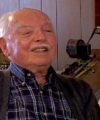
Notes
We interviewed Eddie Friedman in his home in Tarzana in 2006
Camera: Patrick Dunavan / Audio: Ken Gale
Eddie Friedman was one of the first animators to animate the new styles that UPA created. During the early years in the Otto K. Oelsen building he began by taking scenes home to do, but soon became a cherished staff animator, working on nearly all the classic UPA masterpieces. Eddie was also an Olympic athlete who taught fencing, and was the champion ping pong player in the Toluca Lake patio area of the UPA studio, during lunch and break times.
Eddie Friedman is part of a presently unreleased scene.
Joe Messerli
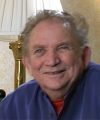
Notes
We interviewed Joe Messerli in his home in New York in 2006.
Joe Messerli was a comic book artist, when he decided to study at Choinards. There he met UPA artists who eventually led to him working there on the CBS television series. Joe met Evelyn Field, who was an ink and painter at UPA. They got married, and were still together when Joe died. Our UPA romance story, albeit with a bittersweet ending.
Joe Messerli is part of a presently unreleased scene.
Bob Dranko
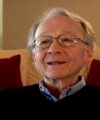
Notes
We interviewed Bob Dranko in the home of associate Tim Baskerville, in West Hills, California, in 2005
Camera: Patrick Dunavan / Audio: Ken Gale
Robert Dranko was one of the main designers during the heyday of UPA Pictures, often doing color and backgrounds as well. He came to the studio, after seeing some of UPAs work and realizing that this was the place to be for an innovative artist, when most of the world was still in the dark ages, when it came to creative work.
Dranko continued to create is own fine art during, and after leaving UPA.
Sam Clayberger
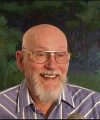
Notes
We interviewed Sam Clayberger at Stevens’ Recording Studio in 2007.
Audio: Ed Stevens
Sam Clayberger, like many UPA artists, began as a student of Don Graham’s at Choinards Art Institute. As Sam was nearing graduation he asked Graham’s advise as to which of the studios he should to try to get work. Graham considered UPA the only option in those days for people who were artists and wanted to work in the animation business. He advised Sam to apply for any job possible, “sweep the floors”, he said, “if you have to, just to get in there”, and that’s exactly what he did, while getting to know the artists there. Eventually they saw his talent and he was given a job at designing and background artwork, exactly what he loved.
Sam Clayberger is part of the Sweep the Floors scene
Click to hear a portion of his interview
Erv Kaplan
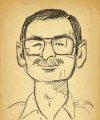
Notes
We interviewed Erv Kaplan in his home studio in Tarzana in 2006.
Erv Kaplan had a long career at Filmation, but before that he worked on background at UPA, often under the tutelage of Bob McIntosh. He fact, he and Bob stayed friends for many years and spend long hours discussing fine art, which they both enjoyed in later years. Erv has been one of the last remaining artists from the glory years of UPA, and was among a handful of them who graced a panel discussion at a UPA Tribute in 2010, at an AniMazSpot festival that year at Woodbury University.
Charlene Petersen
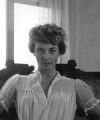
Notes
Charlene Peterson was interviewed audio-only by her daughter in her home around 2005.
Charlene Peterson shared an office with fellow designer, Sam Clayberger, who talks about her in his interview. We don’t have a lot of information on her, can’t even find the name of her daughter, who we met shortly before this interview was made, but Peterson was a major contributor to the excellence of UPA.
Dave Weidman
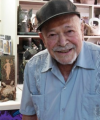
Notes
We interviewed Dave Weidman in his classic home studio in the hills above Hollywood, California, in 2006.
Dave Weidman was among the graphic sensations who arrived in the late 1950s, flourished during the CBS television series, and continued on at UPA into the 1960s. His later life was dedicated to independent graphic design projects, and his home was full of his brilliant designs. In fact, we spent almost as much time pouring over his creations as we did for our interview with him.
Dave Weidman is part of a presently unreleased scene.
Fred Crippen
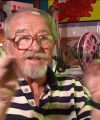
Notes
We interviewed Fred Crippen in his his bustling Pantomime Pictures studio, in Studio City, California, in 2005.
Camera: Patrick Dunavan / Audio: Ken Gale
Fred Crippen was a fascinating artist to interview, because he worked first at the highly praised UPA New York studio as a budding animator, under the tutelage of Dwayne Crowther, and later moved to Burbank for the Ham & Hattie productions, while the CBS Gerald McBoing Boing television series was just getting under way. He directed some of the funniest segments, the Three Horned Flink, Fight on for Old, Winter Sports, among many others. Fred also made himself available for all our events, being on the panel for the 2004 AFI UPA Tribute, the epic 2006 Egyptian Theatre tribute, the 2010 AniMazSpot festival tribute at Woodbury, and the big 2012 Magoo at the Alex Tribute, which screened pristine 35mm prints of all 15 Oscar nominated UPA shorts. Plus, he gave unforgettable tours of his Pantomime Pictures studio to wide eyed attendees two AniMazSpot festivals.
Fred Crippen is part of the Unlimited Animation scene.
Jimmy Murakami
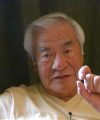
Notes
We interviewed Jimmy Murakami during a break in his role as a jurist at the international animation festival at Zagreb in 2006.
Jimmy Murakami was able to give us a wonderful interview, albeit squashed, between competition screenings. Jimmy was one of the hot young talents on the CBS Boing television series, working much of the time with Fred Crippen, Ernie Pintoff. and Mel Leven. Later, he formed Murakami/Wolff with Fred Wolff, creating countless award winning shorts, and later moved to Dublin, Ireland, to live and continue his creative output.
Jimmy Murakami is part of a presently unreleased scene.
